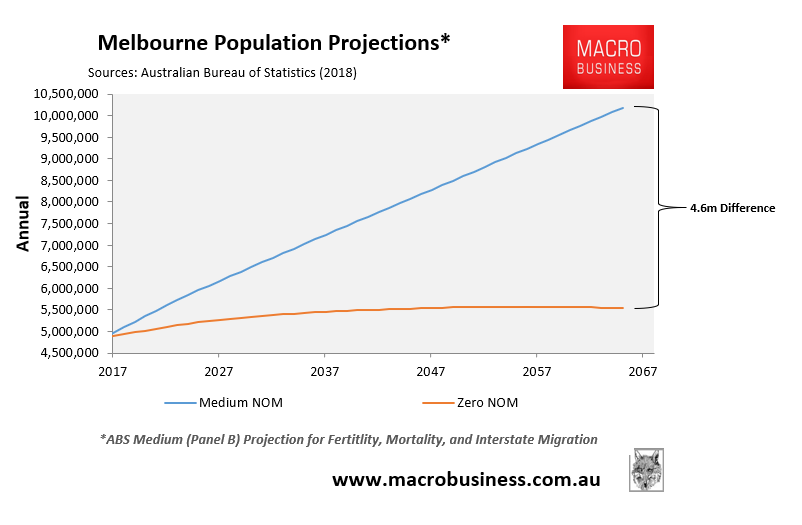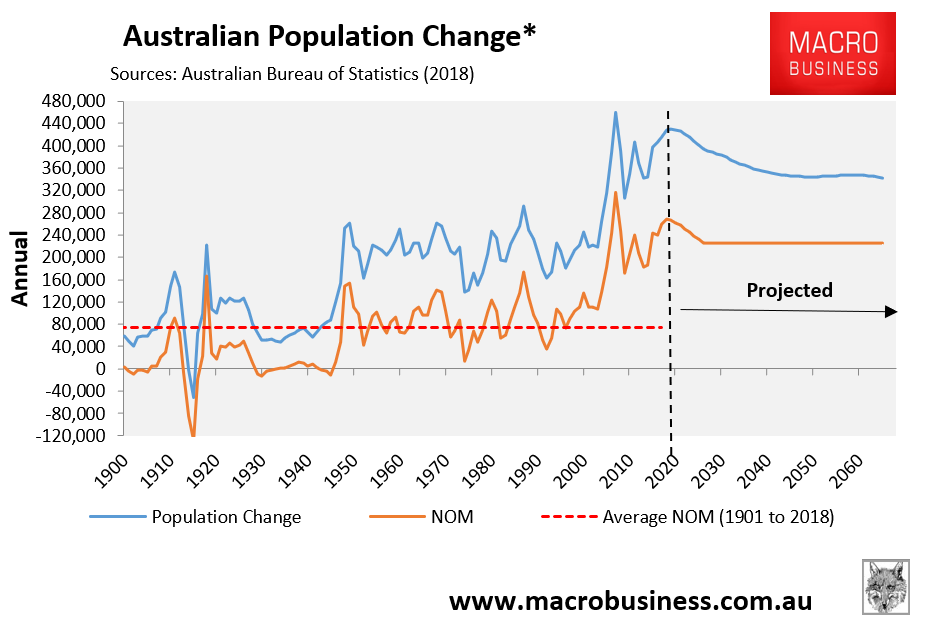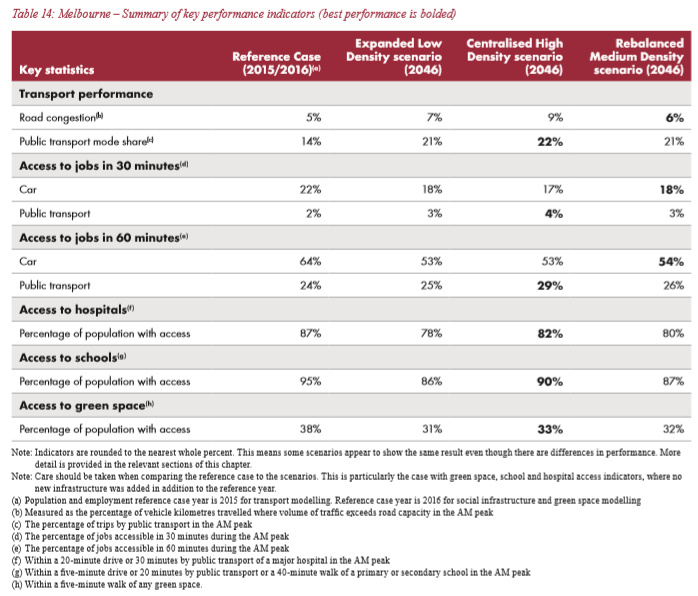The latest medium population projections from the ABS has Melbourne’s population more than doubling to 10.2 million by 2066, with the city’s population projected to increase by 109,000 people annually:

As you can see above, 89% of Melbourne’s population increase is projected to come from net overseas migration (NOM), meaning that without positive migration, Melbourne’s population would increase to only 5.5 million by 2066.
Yesterday, The Age analysed projections from the Victorian Government showing that the lion’s share of Melbourne’s population would occur in its growth corridors, crush-loading infrastructure, liveability and amenity:
Many of the areas expected to experience the greatest population growth are on Melbourne’s expanding suburban fringes.
In Melbourne’s west, Melton South, Tarneit, Werribee West, Werribee South, Wyndham Vale and Point Cook South are projected to double in size, along with Hillside, in Melbourne’s north-west…
The growth projections have sparked major concerns by planning experts on whether the areas have infrastructure needed to cope with the population boom…
RMIT professor of urban policy Jago Dodson said that under these population projections the Wyndham municipality, which takes in Werribee, will have a population in 2036, equivalent to that of Tasmania.
“You’ve got to ask – does the population in Wyndham have the full suite of services that you would see in a state?”…
Professor Dodson said there were some serious deficits in how growth suburbs were planned, particularly in regards to access to public transport, access to high-skilled jobs and a lack of cultural facilities.
As usual, the article failed to mention that a Giant Melbourne is a direct policy choice, not inevitable. It could be avoided with the stroke of a pen from the federal government by lowering Australia’s immigration intake back to historical levels:

As it stands, Melbourne is facing a dystopian future with increased traffic congestion, longer commute times, as well as reduced access to jobs, schools, hospitals and open space under every build-out scenario.
If you don’t believe me, check out the below scenario projections from Infrastructure Australia, assuming Melbourne’s population balloons to a projected 7.3 million people by 2046:

As you can see, all liveability indicators are projected to deteriorate irrespective of whether Melbourne builds up or out. Obviously, the situation would deteriorate further as Melbourne’s population increases by another 2.9 million people by 2066, as projected by the ABS.
Nobody voted for this. Australia’s policymakers should be hung, drawn and quartered for deliberately trashing residents’ living standards.

